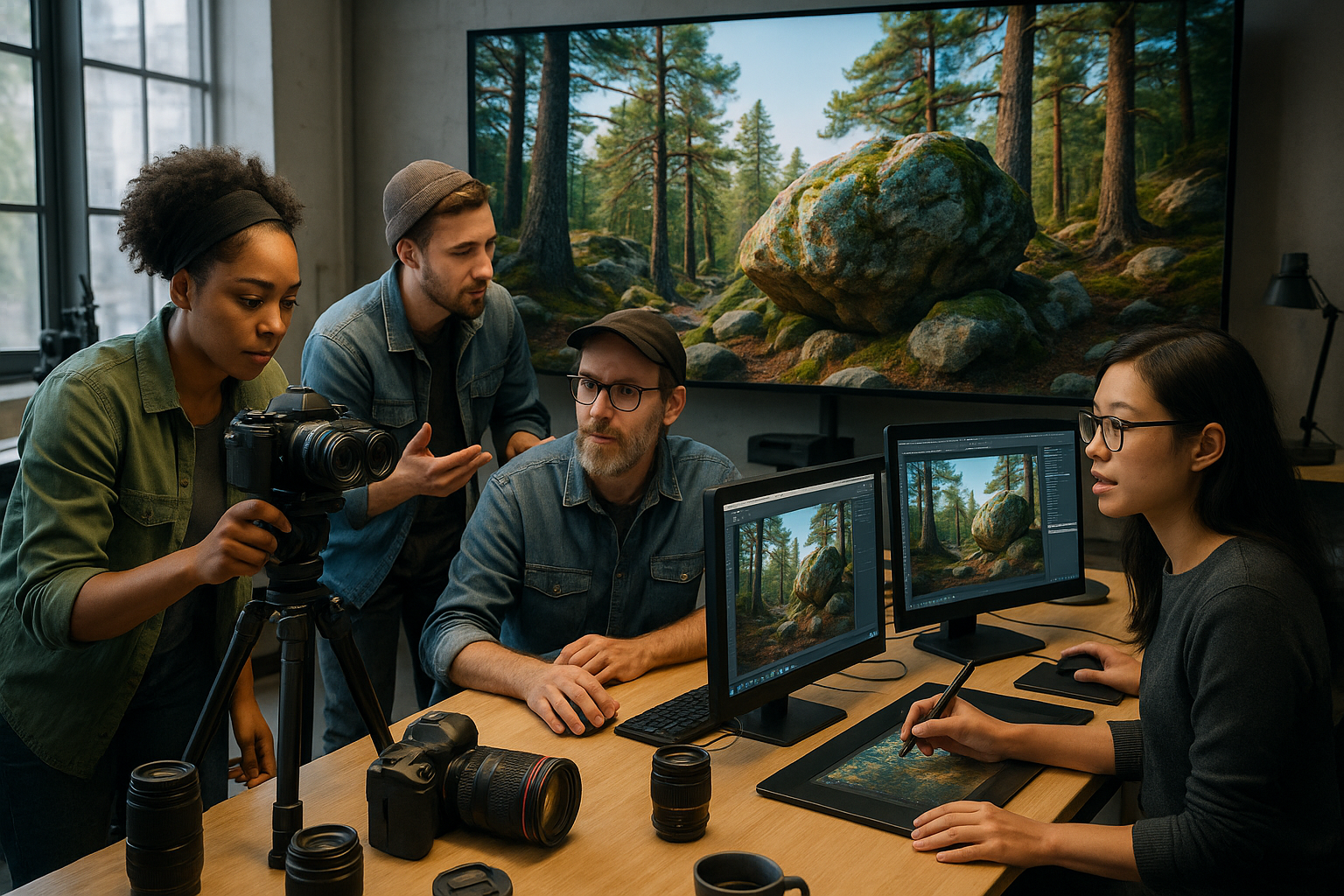Geometry reflection transforms abstract mathematical concepts into powerful tools for problem-solving, creative thinking, and real-world applications that extend far beyond the classroom.
🔍 Understanding Reflection in Geometric Space
Reflection geometry represents one of the most fundamental transformations in mathematics, yet its implications reach into architecture, design, engineering, and even personal development. When we master the principles of reflection, we unlock patterns that govern everything from crystalline structures to digital graphics, from mirror symmetry in nature to the algorithms that power modern technology.
At its core, geometric reflection involves flipping a shape or object across a line, creating a mirror image that maintains the original’s size and proportions while reversing its orientation. This seemingly simple concept becomes the foundation for understanding symmetry, spatial reasoning, and transformation geometry—skills that prove invaluable across multiple disciplines.
The power of reflection geometry lies not just in memorizing formulas but in developing an intuitive understanding of how objects behave in space. This spatial intelligence translates directly into enhanced problem-solving abilities, improved visual-spatial skills, and a deeper appreciation for the mathematical structures underlying our physical world.
The Mathematics Behind Mirror Transformations ✨
Reflection operates on coordinate systems through specific mathematical rules. When reflecting a point across the x-axis, we keep the x-coordinate constant while changing the sign of the y-coordinate. Conversely, reflection across the y-axis maintains the y-coordinate while inverting the x-coordinate. These fundamental operations become building blocks for more complex transformations.
The line of reflection serves as the perpendicular bisector between any point and its reflected image. This property creates powerful geometric relationships that help solve problems involving distance, angle measurements, and positional relationships. Understanding this principle allows students and professionals to predict outcomes before performing calculations, developing that crucial geometric intuition.
Advanced reflection concepts include reflections across diagonal lines, such as y=x or y=-x, where coordinate values swap positions with sign changes determined by the line’s slope. These transformations frequently appear in computer graphics, game development, and engineering applications where precise spatial manipulations are essential.
Coordinate Transformation Principles
The transformation matrix for reflection provides an algebraic framework that computers and calculators use to perform these operations efficiently. For reflection across the x-axis, the transformation matrix contains values that systematically convert input coordinates into their reflected counterparts. This mathematical elegance demonstrates how abstract algebra connects directly to visual, geometric concepts.
Students who master these coordinate transformations gain advantages in calculus, linear algebra, and physics—fields where transformation geometry appears constantly. The ability to visualize these changes mentally, before applying formulas, distinguishes proficient mathematicians from those merely following procedures.
🎯 Workshop Strategies for Mastering Reflection Geometry
Effective workshops on reflection geometry should balance theoretical understanding with hands-on practice. The most successful learning experiences incorporate physical manipulatives, digital tools, and real-world applications that demonstrate how reflection principles operate outside textbook exercises.
Begin with concrete materials like mirrors, transparent overlays, and grid paper. These tactile experiences help learners internalize reflection concepts before moving to abstract coordinate systems. Students can physically flip shapes across lines, immediately seeing the relationship between original and reflected images.
Progressive complexity ensures participants build confidence before tackling challenging problems. Start with simple reflections across horizontal and vertical axes, then advance to diagonal lines, and finally explore compositions of multiple reflections. This scaffolded approach prevents cognitive overload while maintaining engagement.
Interactive Learning Techniques
Digital geometry tools revolutionize how we teach and learn reflection concepts. Dynamic geometry software allows users to manipulate shapes and observe reflections in real-time, building intuition through experimentation rather than rote memorization. These platforms enable students to test hypotheses, discover patterns independently, and develop deeper conceptual understanding.
Collaborative problem-solving activities create opportunities for peer learning and discussion. When students explain reflection concepts to each other, they solidify their own understanding while helping classmates overcome obstacles. Workshop facilitators should structure activities that require communication, justification of reasoning, and collective problem-solving.
Real-world connection exercises demonstrate reflection geometry’s practical applications. Challenges involving architectural design, logo creation, pattern analysis in nature, or optimization problems in engineering show participants why these mathematical concepts matter beyond academic assessments.
Applications Across Professional Fields 🏗️
Architecture and interior design rely heavily on reflection principles for creating balanced, aesthetically pleasing spaces. Architects use symmetry—which emerges from reflection geometry—to design buildings that feel harmonious and structurally sound. Understanding reflection helps designers predict how light will bounce through spaces, how patterns will appear when repeated, and how to create visual balance.
Computer graphics and animation industries depend entirely on transformation geometry, including reflection, to render realistic images and smooth animations. Every reflection you see in a video game, every mirror surface in animated films, and every symmetrical pattern in digital art results from algorithms based on reflection geometry principles.
Engineering fields use reflection concepts for signal processing, optics, and structural analysis. When designing antenna arrays, engineers apply reflection principles to direct electromagnetic waves. Optical engineers use geometric reflection laws to design everything from telescopes to fiber optic systems that transmit data across continents.
Creative Industries and Design Thinking
Graphic designers employ reflection techniques to create logos, patterns, and visual compositions that capture attention and communicate brand identity. The symmetry created through reflection produces images that feel complete, balanced, and memorable—qualities essential for effective visual communication.
Fashion designers use reflection concepts when creating patterns, ensuring garments have proper symmetry and visual appeal. Textile designers apply reflection transformations to generate repeating patterns that cover fabrics seamlessly, demonstrating how geometric principles translate directly into commercial products.
🧠 Cognitive Benefits of Geometric Thinking
Research consistently shows that studying geometry, particularly transformation concepts like reflection, enhances spatial reasoning abilities that extend beyond mathematics. These cognitive skills improve performance in STEM fields, support better navigation abilities, and even correlate with success in surgical professions requiring precise spatial manipulation.
Mental rotation and visualization capabilities develop through regular practice with geometric transformations. Students who master reflection geometry find it easier to imagine three-dimensional objects from two-dimensional representations—a skill crucial for fields ranging from chemistry to engineering to architecture.
Problem-solving approaches learned through geometry transfer to non-mathematical domains. The logical reasoning required to prove geometric theorems, the systematic approach needed to solve transformation problems, and the pattern recognition developed through geometric study all contribute to broader analytical thinking skills.
Building Mathematical Confidence
Geometry often provides breakthrough moments for students who struggle with algebra. The visual nature of reflection problems allows learners to leverage their spatial intelligence, offering alternative pathways to mathematical understanding. This accessibility makes geometry workshops particularly valuable for diverse learning styles.
Success with concrete geometric concepts builds confidence that transfers to more abstract mathematical topics. Students who master reflection geometry often find renewed motivation for tackling challenging algebraic or calculus concepts, having proven to themselves they can understand complex mathematical ideas.
⚙️ Technology Tools for Geometric Exploration
Dynamic geometry software platforms have transformed how students interact with transformation concepts. These tools allow users to create geometric figures, apply transformations including reflections, and observe results immediately. The instant feedback helps learners test conjectures and discover mathematical relationships through guided exploration.
Augmented reality applications now bring geometric transformations into three-dimensional space, allowing students to walk around reflected objects and view them from multiple perspectives. This immersive experience deepens understanding by making abstract mathematical concepts tangible and interactive.
Mobile applications make geometry practice accessible anywhere, enabling students to reinforce workshop learning through consistent practice. Well-designed apps provide progressive challenges, instant feedback, and visual representations that support conceptual development alongside procedural fluency.
Selecting Effective Digital Resources
Quality geometry tools should prioritize conceptual understanding over mere answer-checking. Look for platforms that require students to predict outcomes before revealing solutions, that provide multiple representations of concepts, and that encourage exploration rather than passive consumption.
Integration with classroom curriculum ensures technology enhances rather than replaces foundational instruction. The best digital tools complement workshop activities, providing opportunities for practice, extension, and individualized learning paths that address diverse student needs.
🎨 Creative Approaches to Reflection Problems
Artistic integration makes geometry workshops more engaging while demonstrating connections between mathematics and creative expression. Activities like creating tessellations, designing symmetrical artwork, or analyzing patterns in Islamic geometric art show how reflection principles produce aesthetically compelling results.
Movement-based learning brings kinesthetic elements into geometry workshops. Students can physically model reflections by arranging themselves in patterns, using their bodies to represent points that reflect across human-formed lines. This embodied learning approach helps kinesthetic learners internalize concepts that might remain abstract in traditional instruction.
Storytelling frameworks provide context for geometric challenges, transforming isolated problems into narrative experiences. When students help a character navigate a mirror maze or design a symmetrical garden using reflection principles, they engage more deeply with mathematical content while developing problem-solving persistence.
Assessment Strategies That Promote Understanding 📊
Effective assessment in geometry workshops goes beyond testing procedural knowledge to evaluate conceptual understanding and application abilities. Performance tasks that require students to design, explain, and justify solutions provide richer information about their geometric thinking than traditional multiple-choice questions.
Self-assessment opportunities help learners develop metacognitive awareness about their geometric understanding. When students predict difficulty levels before solving problems, evaluate their solution strategies afterward, and identify concepts needing further study, they take ownership of their learning process.
Portfolio-based assessment allows students to demonstrate growth over time, showcasing increasingly sophisticated understanding of reflection geometry. Collections might include problem solutions, creative applications, explanations of concepts, and reflections on learning experiences—providing comprehensive evidence of mathematical development.
🚀 Advanced Topics and Extension Opportunities
Students who master basic reflection concepts can explore glide reflections, which combine reflection with translation to create patterns seen in footprints and architectural friezes. These composite transformations demonstrate how basic operations combine to produce complex results, preparing students for advanced mathematical study.
Three-dimensional reflections extend concepts into spatial geometry, requiring learners to visualize reflections across planes rather than lines. This advanced topic connects to crystallography, molecular chemistry, and computer-aided design—professional fields where three-dimensional transformation understanding is essential.
Symmetry group theory provides mathematical framework for analyzing all possible symmetries of objects, including reflective symmetries. While typically reserved for advanced mathematics courses, motivated students can explore these concepts through hands-on investigation of wallpaper patterns and crystalline structures.
💡 Sustaining Learning Beyond the Workshop
Creating lasting impact requires connecting workshop experiences to ongoing practice opportunities. Participants should leave with specific strategies for continued learning, resources for independent exploration, and clear pathways for applying reflection geometry concepts in relevant contexts.
Establishing learning communities allows workshop participants to support each other’s geometric development over time. Online forums, study groups, or follow-up sessions provide spaces where learners can share discoveries, ask questions, and tackle increasingly challenging problems collaboratively.
Integration with broader mathematical learning ensures reflection geometry doesn’t remain isolated. Helping participants see connections to algebra, trigonometry, and calculus demonstrates how geometric thinking supports success across mathematical domains, motivating continued engagement with these concepts.
The journey to mastering reflection geometry opens doors to enhanced spatial thinking, improved problem-solving abilities, and practical skills applicable across numerous professional fields. By approaching these concepts through well-designed workshops that balance theory with application, visual learning with algebraic understanding, and individual work with collaboration, learners develop geometric intuition that serves them throughout their academic and professional lives. The power of reflection extends far beyond mathematics classrooms, offering tools for analyzing symmetry in nature, creating balanced designs, and understanding the geometric structures underlying our technological world.
Toni Santos is a visual historian and artisan whose creative lens is captivated by the forgotten marvels of antique optical devices. Through his thoughtful storytelling, Toni revives the instruments that once transformed light into wonder—camera obscuras, magic lanterns, kaleidoscopes, and other ingenious tools that shaped our earliest visual imaginations.
His journey is rooted in a fascination with how humans have long sought to bend, reflect, and reveal the unseen. Whether tracing the mechanical poetry of 19th-century projectors or illustrating the tactile elegance of early lenses, Toni’s work invites us to see vision itself as an evolving art form.
Blending handcrafted design with historical inquiry, Toni brings to life the material soul of these devices—celebrating not just how they functioned, but what they meant. His creations and curated stories illuminate a world where science, illusion, and beauty were intricately linked through glass and brass.
As the curator of Vizovex, Toni shares detailed studies, reconstructed artifacts, and immersive content that help others rediscover the origins of visual technology and the magic of analog perception.
His work is a tribute to:
The craftsmanship behind early visual instruments
The wonder of seeing through the eyes of another century
The intersection of optics, art, and imagination
Whether you’re a collector, a designer, or someone drawn to the lost poetry of vision, Toni welcomes you into a world where light is a storyteller—one prism, one lens, one forgotten invention at a time.





